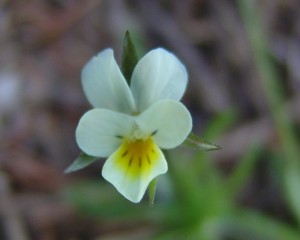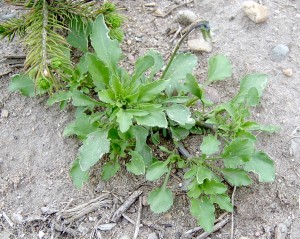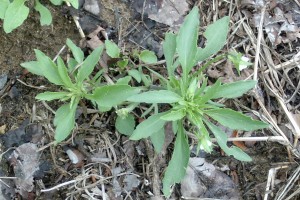
Field violet – Viola arvensis
Viola arvensis Murr.
Violaceae (Violet family)
MI Status
Non-native
Life cycle
Prostrate to ascending winter annual.
Leaves
Young leaves that develop from a basal rosette are round to oval with a few shallow teeth on the margins, long petioles and small stipules. Mature leaves are longer and narrower with round-toothed margins, hairy veins on the leaf underside and large, deeply lobed stipules.
Stems
Prostrate to ascending, multi-branched stems are less than 16 inches long.
Flowers and fruit
Flowers have five white to pale yellow petals sometimes tinged with purple. The lower petal is the largest and the sepals are the same length as the petals or slightly longer. Fruit are single-celled capsules with three valves.
Reproduction
Seeds.
Similar weeds
Common blue violet
(V. papilionacea Pursh)
Differs by having a perennial nature with rhizomes; basal, hairless, heart-shaped leaves with round-toothed margins; and blue to purple to occasionally white flowers.



Other Documents in this Series
You Might Also Be Interested In
-
Student-led bird banding innovation spearheads continuation of data collection despite COVID-19
Published on March 16, 2021
-
Q&A: David Howe preps CANR faculty, students for remote learning
Published on October 7, 2020
-
MSU research team receives USDA grant to evaluate effectiveness, cost of new blueberry pest management strategies
Published on February 19, 2021
-
Reciprocal Research: A Guidebook to Centering Community in Partnerships with Indigenous Nations
Published on April 22, 2021
-
MSU researcher awarded five-year, $2.5 million grant to develop risk assessment training program
Published on October 13, 2020
Accessibility Questions:
For questions about accessibility and/or if you need additional accommodations for a specific document, please send an email to ANR Communications & Marketing at anrcommunications@anr.msu.edu.



 Print
Print Email
Email




